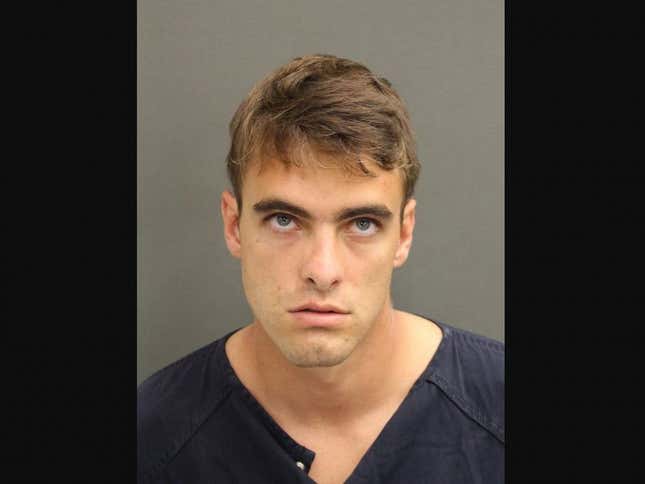
Florida cops arrested a 26-year-old man Friday after he threatened to shoot up a Walmart—an instant callback to the mass shooting in El Paso, Texas, last week that claimed 22 lives.
As ABC News reports, Florida Department of Law Enforcement officials say Richard Clayton posted on his Facebook account on August 6, “3 more days of probation left then I get my AR-15 back. Don’t go to Walmart next week.”
Last week’s shooting in El Paso, which took place at a Walmart, was done with an AR-15. And while Clayton wasn’t actually on probation at the time he posted the threat, officials say he “appears to believe in the white supremacist ideology and has a history of posting threats on Facebook using fictitious accounts.”
He’s at least the second white supremacist this week to be arrested for plotting a mass shooting. Officials arrested a 23-year-old from Las Vegas last Thursday for allegedly planning to fire-bomb a synagogue, ABC News reports. The suspect had disclosed neo-Nazi and white supremacist beliefs in online conversations with an undercover FBI agent.
Despite growing acknowledgment among the American public that white supremacists pose a substantial domestic terror threat (and, you know, an existential threat to the future of American democracy), leaked FBI documents from 2018 show skewed priorities and incorrect projections. The bureau labeled “black identity extremists” and animal rights activists as top terrorist threats.
The FBI defines black identity extremists as people who “use force or violence in violation of criminal law in response to perceived racism and injustice in American society.”
The term “black identity extremist” was first floated in FBI documents in 2017—and received massive backlash back then for being both racist and misguided. To many, it harkened back to the COINTELPRO days, when activists fighting to advance racial justice were surveilled and harassed by the federal government.
The documents show the FBI remains committed to its focus on “black identity extremists,” despite little evidence to substantiate it.
From the Young Turks, which first obtained the leaked FBI docs on Thursday (emphasis mine):
While the 2020 threat guidance alludes to violent black extremist attacks, each of the specific attacks referenced were carried out by white supremacists: the October 2018 attack on a synagogue in Pittsburgh, which killed 11, the March 2019 attack on two mosques in Christchurch, New Zealand, which killed 51, and the April 2019 attack on a synagogue in Poway, California, which killed one.
In July, FBI Director Chris Wray told Congress that the majority of terrorism cases the Bureau has investigated in 2019 “are motivated by some version of what you might call white supremacist violence.”
The head of the FBI’s counterterrorism division testified that 40% of domestic terrorism cases were racially motivated extremists and that most of them were white supremacists.
Despite the apparent rise in attacks, the documents show that, in 2018, the FBI anticipated a decline in national white supremacist groups.
A decline white supremacist groups—how’d that turn out?
The latest counterterrorism guidelines now lump “black identity extremism” and white supremacists under one category, “Racially Motivated Violent Extremism” (RMVE). But the 2020 counterterrorism priorities still single out “Black Supremacist Extremists,” writing this group is “likely to target civilian and government entities that are perceived as oppressors, including, but not limited to, law enforcement officers, the U.S. government, members of rival BSE groups, and individuals based on race, ethnicity, sexual orientation and religion.”
White supremacist groups—again, now re-classified as “Racially Motivated Extremists”—were dubbed a “medium threat” by the FBI, whereas black identity extremists were considered a bigger threat than Al-Qaeda.
“Some RMVEs [Racially Motivated Violent Extremists] are driven by a belief in the superiority of the white race and a perception that the U.S. government is conspiring with Jews and minority populations to bring about the race’s demise,” the latest guidelines referring to white supremacists read.
The description, of course, overlooks one particularly relevant fact: that the U.S. government is currently helmed by a man who has inflamed and promoted racist rhetoric against black people, women of color, and Latinx immigrants. The sort of rhetoric that has shown up in the El Paso shooter’s alleged manifesto.
Speaking at a July hearing before the Senate Judiciary Committee, FBI Director Christopher Wray demurred from discussing the specifics of white supremacist or BIE ideology, saying the agency’s focus “is on the violence.”
“We don’t investigate ideology, no matter how repugnant,” Wray said.
That may be the problem.

